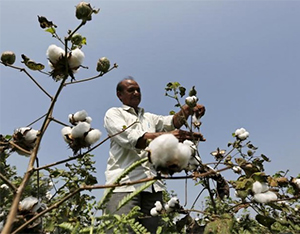Lahore, Dec 8: Pakistan has lifted an "undeclared" ban on import of ginned cotton from India, days after rejecting a consignment of 10,000 bales of cotton from India citing violation of plant quarantine rules by importers.
Earlier, the Department of Plant Protection (DPP) of the Ministry of National Food Security and Research put cotton imports from India on hold through Wagah and Karachi port from November 23, saying the shipments did not fulfil phyto- sanitary conditions, Dawn newspaper reported.
The rising border tensions between the two neighbours had prompted Islamabad to impose the ban on 10,000 bales of cotton worth USD 3.3 million from India.
"The DPP has started issuing permits for importing cotton from India via Wagah. But the DPP has also made it clear to importers that only the consignments free from cotton seeds will be accepted and allowed into the country," a DPP official said.
"If implemented strictly, we will not be able to import cotton from any country in the world, let alone India, because no consignment is completely free from cotton seeds," he said.
Last year, Pakistan imported ginned cotton worth more than USD 800 million from India which accounted for two-thirds of India's cotton exports.
Traders are expecting cotton imports from India and elsewhere to surge this year in view of the anticipated shortfall in the domestic crop while the government expects cotton output to remain close to 10.5 million bales of 170kg each against a reduced industry demand of 14 million bales owing to widespread factory closures in Punjab because of higher energy prices.
Last year, a drop of 27 per cent in domestic cotton output shaved 0.5 per cent off gross domestic product growth rate of Pakistan.





Comments
Add new comment